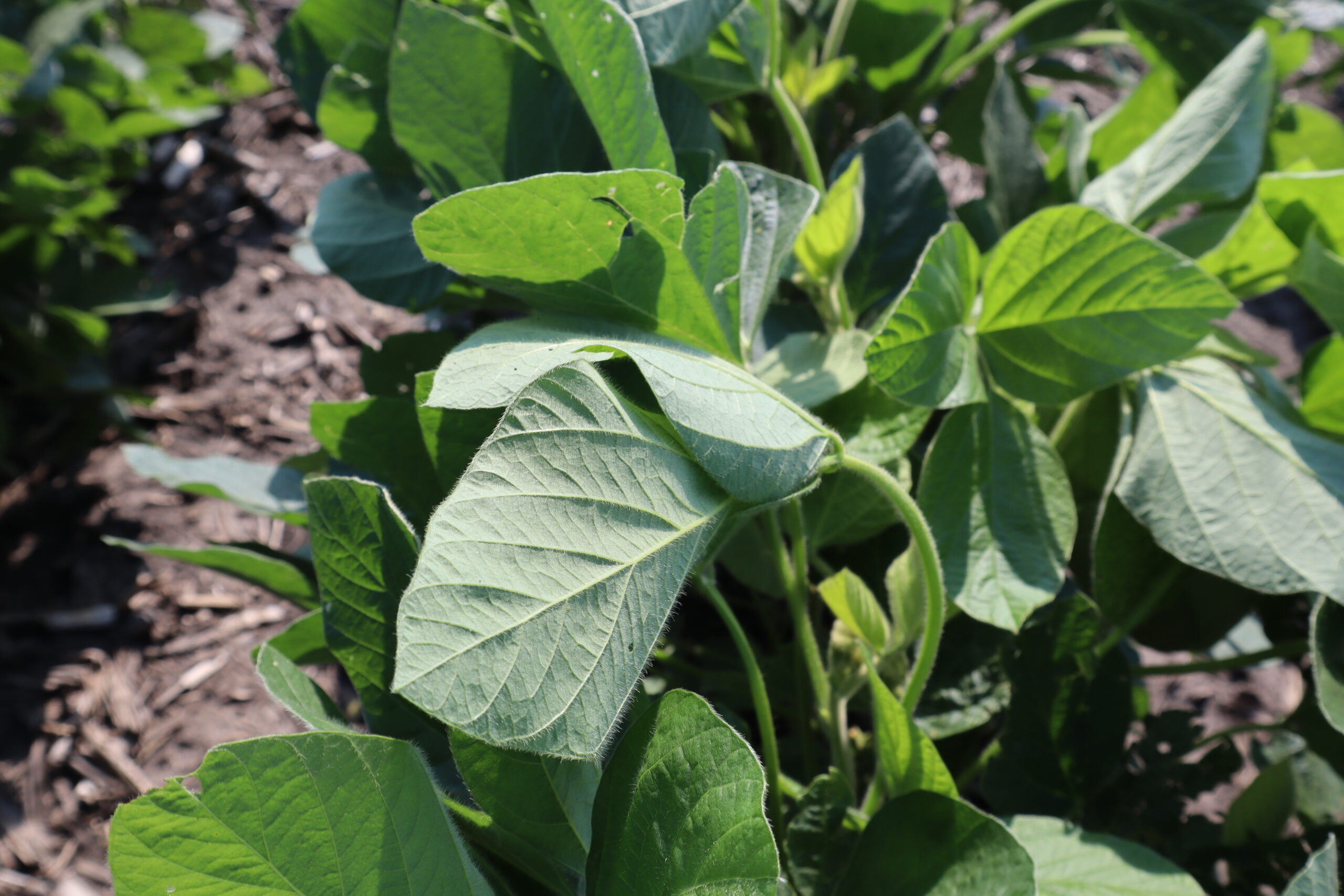Rain. Depending on the season and whether you do not have enough of it or perhaps too much, rain can lead to disappointing failure or a record-breaking crop. Agriculture is inextricably linked with water, yet those of us without irrigation have very little ability to control the amounts and timing of water that our crops receive. It is a critical ingredient to a soybean plant’s growth and development, but fortunately the combination of relatively good soils throughout Illinois and usually ample rainfall allow for high yield potential in many years. From time-to-time, however, rain may be insufficient, and your soybean crop may experience thirst.
Why is water important to a crop?
Water influences almost all aspects of a soybean plant’s development. Water is taken up from the soil through the roots and ultimately exits the plant through microscopic pores on the leaf surface known as stomata. This process is referred to as transpiration, and this is the way by which plants cool themselves. Additionally, water influences most, if not all, metabolic processes in the plant. In other words, the mechanics of the plant that allow it to photosynthesize, accumulate sugars, and ultimately produce a harvestable crop.
What happens when water runs short?
Depending on soil type and weather conditions, soil may dry to a point where a plant’s ability to extract water from the soil is insufficient to supply the demand for water lost through transpiration. When this occurs, those stomatal openings on the leaf surface will likely close to conserve water. While stomatal closure is an important defense against drought stress, stomata are also the way by which carbon dioxide enters the plant for photosynthesis. Prolonged stomatal closure during drought is one of the main ways that photosynthesis is negatively impacted, and yield loss occurs.
As water stress progresses in a soybean plant, loss of turgor pressure may occur. Turgor pressure is the force that gives a well hydrated plant its plump, healthy appearance. As turgor pressure decreases, a plant will wilt. Even under drought conditions, stressed plants usually recover turgor pressure during the overnight hours when the stomata are closed, transpiration is not occurring, and air temperatures are cooler. As the sun rises and transpiration resumes, stressed plants will start to wilt again.
 What’s up with those soybean leaves that flip over during stress?
What’s up with those soybean leaves that flip over during stress?
One of the unique responses of a soybean plant to water stress is known as leaf inversion. As the plant begins to experience water stress, the terminal or center leaflet in a soybean’s trifoliolate leaf will flip over displaying its silvery underside. It is thought that this response allows the plant to reflect some of the solar energy that can become damaging when water is limiting. You will often see some of this leaf inversion response during midday even when water is not particularly limiting on a hot day. Air temperatures and transpiration are usually greatest toward the middle of the day, and this is simply a way that a soybean plant limits water loss like leaf rolling in a corn plant.
How much water does it take to produce a bushel of soybeans?
Estimates of soybean water use efficiency vary widely, but it is safe to assume that for every bushel of soybean grain produced, between 3,000 and 4,000 gallons of water per acre will be taken up by the roots and eventually lost through transpiration. In other words, an 85-bushel soybean crop might require as much as 340,000 gallons of water per acre over the course of the season. This doesn’t necessarily imply that every drop of the water required must fall as rain during the time that the crop is in the field, but the combination of rainfall, stored soil moisture, and irrigation must be adequate to achieve the water requirements of a specific yield goal.

Perhaps more importantly, soybean water use per day is highest during the reproductive stages (flowering to full seed). During this time period, a soybean crop will use between 0.2 and 0.3 inches of water per acre per day. This explains why August rains are particularly important for the success of a high yielding soybean crop.
What can you do to improve water availability?
Outside of installing an irrigation system, there are not many easy or quick fixes to insufficient rainfall. As plant breeding and crop management practices continue to advance yield potential, the lack of rainfall at the right times of the season could be an increasing challenge to regularly achieving the high yields that contest winners have demonstrated to be possible. Over the long term, practices that promote improved soil health (for example, increased organic matter, better water infiltration, etc.) will be one piece of the puzzle for helping better manage water availability in our Illinois cropping systems.


 and then
and then